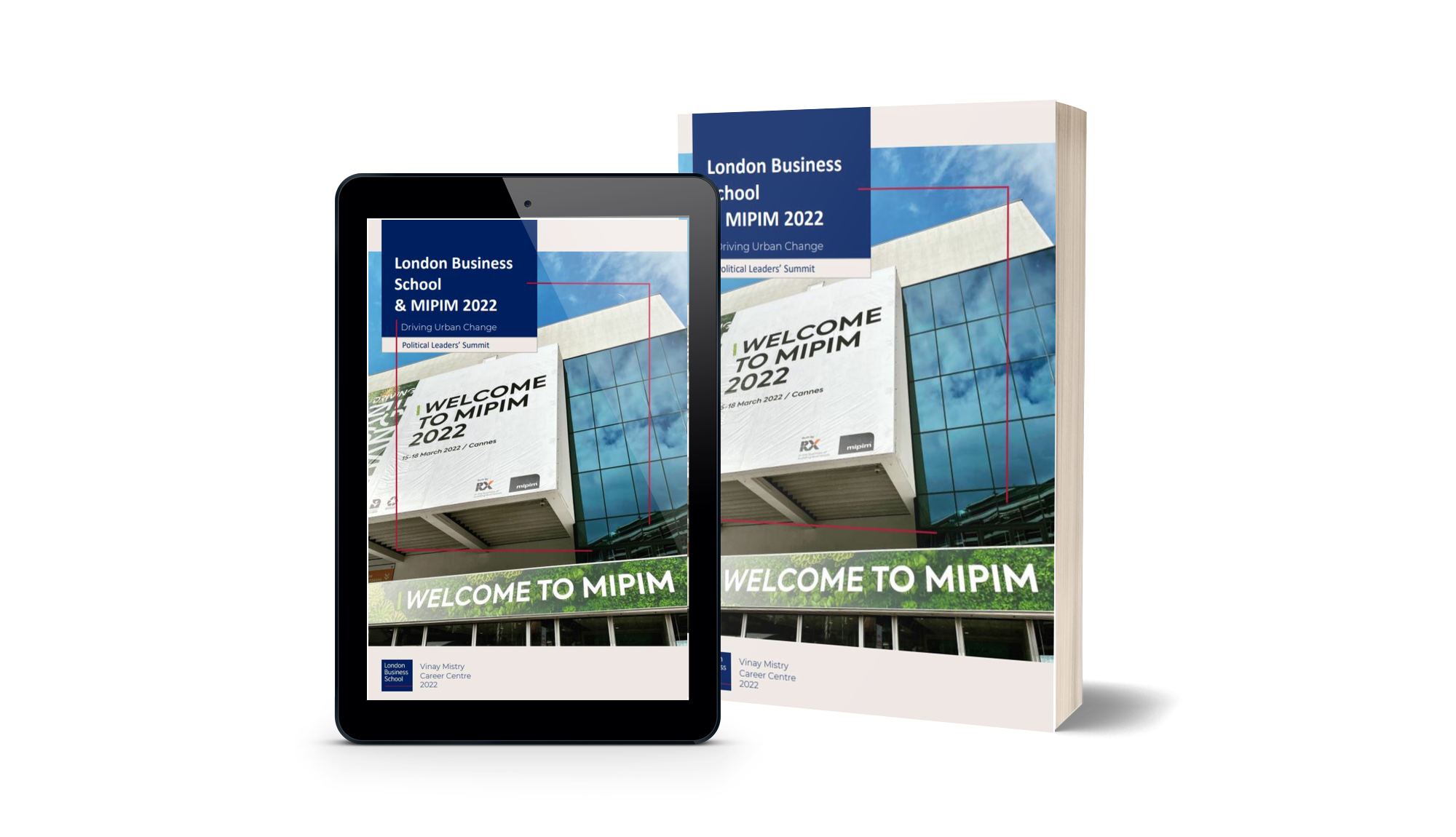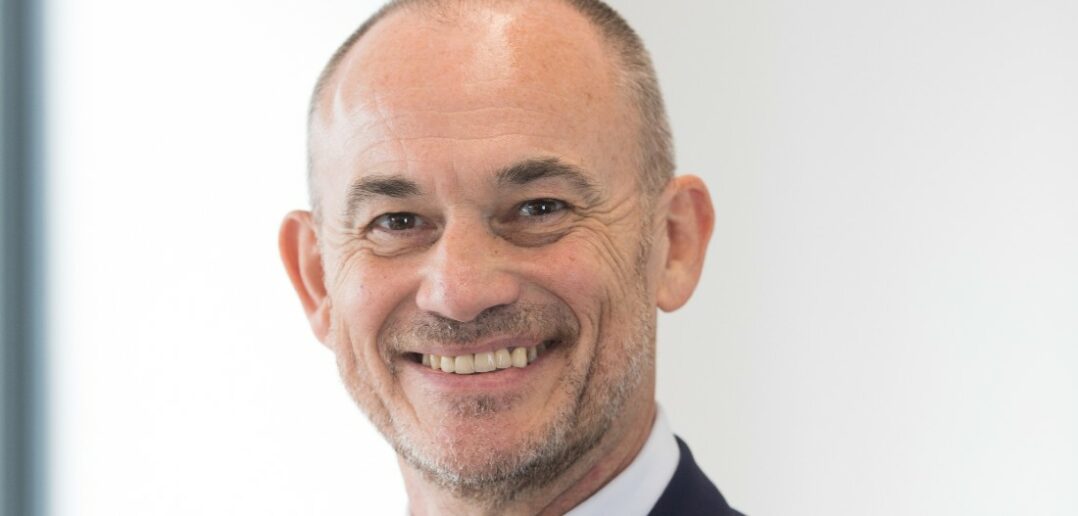With economies contracting across Europe, ‘resilience’ has become a buzz word across business sectors and geographical boundaries.
What does it take for a real estate investment to maintain its resilience, making it ready for any twists or turns that the market might take? We talked with David Hutchings, head of European investment strategy at Cushman & Wakefield.

Whitepaper : LBS political leaders summit
What does it mean to have a ‘resilient’ investment portfolio?
David Hutchings: There is of course an economic output to consider, but at its most basic resilience is first and foremost about the interaction of property with nature. Absolutely everything needs to be considered in this broad concept: from air purity and building materials, to climate change and transportation.
From big companies down, occupiers are expressing more and more interest in having resilient buildings, and Covid-19 is only adding to this.
« Resilient buildings avoid the ‘brown discount’ [rather than a premium ‘green’ price]that will hit other property, and this financial driver should make it an easy decision for investors to invest in resilience. » – David Hutchings, Cushman & Wakefield
How has Covid-19 changed the meaning of resilience?
DH: Covid-19 has pushed wellness further up the agenda. The impact of buildings on health and wellbeing was already receiving more focus than climate change. This is partly because it’s somewhat easier to address and investors can see it having a more immediate impact on their occupiers.
However, we will see a change in priorities around wellness, in particular with regards to air quality. This is not just about having the right air-conditioning, but about having the systems in place to reassure users that the property offers a safe environment.
“Are investors actually building resilience into their portfolios? The answer is that some are, some are thinking about it, some are talking about it, and some are frankly doing too little. As ever there is a wide spectrum of responses.”
How important is resilience in the business agenda of investors?
DH: Covid-19 has not really changed anything as investors were already focussed on building resilience into their portfolios. It has just served as an accelerator. However, are they actually doing it? The answer is that some are, some are thinking about it, some are talking about it, and some are frankly doing too little. As ever there is a wide spectrum of responses.
Many investors don’t want to experiment with resilience. They are still looking for guidance as to what they should do and what their rewards for that would be.
This is where it becomes difficult because we don’t yet have the empirical data on all facets of resilience. We don’t have the data on how the way you operate a property, or the type of property, or location, impacts profitability, liquidity, yields, etcetera.
What would you say to those investors waiting for the empirical evidence to show the benefits of resilience?
Our view at Cushman & Wakefield is that now is the time to act. Investors cannot wait for the right, proven solution to come along.
If you make an investment decision today, then that investment, over the course of its life, will be impacted by sustainability and climate change.
Even though we do not have the full evidence, we have enough knowledge to know that the performance of your investment, its appeal to tenants and certainly your social and environmental impact, is going to be better if you take action.
Is there a certain type of investor who is leading the way?
DH: The players leading the way are those looking long-term at the full return from their investment, e.g. those who take into consideration not just financial factors, but also environmental and social ones.
It is tempting to make broad-brush generalisations and to say that institutions are more alert to social and environmental impacts, but in reality it can be down to the individual fund manager.
Some private equity firms absolutely have resilience baked into their strategy, while some pension funds are talking the talk but not yet walking the walk, particularly for their existing assets as opposed to new purchases.
What is the key that leaders when it comes to resilient investment have got right?
There are so many small things, but for me the most obvious answer is that these investors have listened to the occupier.
“The investors who have got it right have listened to the users of their properties. They have led with the front foot and made changes, realising that otherwise they were not going to have a tenant in their building.”
It is very easy to sit and wait for benchmarks to be developed. We already have a lot of benchmarks for wellness. You can wait for more. You can wait for evidence. You can wait for institutional or financial standards to change.
However, the investors who have got it right have listened to the users of their properties. They have led with the front foot and made changes, realising that otherwise they were not going to have a tenant in their building.
We are hearing a lot at the moment about the need for agility. Does the ‘resilient’ investor need to be agile?
DH: The ‘resilient’ investor needs more than agility. They need to have a willingness to consider change and to innovate.
« Innovation is key because we don’t know the answer to many things; and when there is not an industry standard to turn to, you have to experiment, you have to innovate, and keep changing. »
This is where agility comes in, with the need to be flexible and change your plans, to reconsider, and keep adapting.
How would you respond to headlines such as ‘once-in-a-generation opportunity to buy distressed real estate assets at bargain prices’?
DH: There is not much distress yet in commercial real estate markets across Europe. Nonetheless, when the time is right a few bold investors will of course be ready to act. They will take the most risks and reap the highest returns.
“The markets are now more sophisticated and will react and adjust pricing and liquidity to reflect the new reality, whatever it is.”
There will be some properties changing hands that are very rarely sold but at distressed pricing, such opportunities are likely to be very limited, as the markets are now more sophisticated and will react and adjust pricing and liquidity to reflect the new reality, whatever it is.
Certainly, there are gains to be had and there are huge risks to face as occupiers change how they use property and what they can afford. However, it is not a question of massive systemic distress; it is much more nuanced than that.
To what extent is the sector being saved by low interest rates?
DH: Low interest rates are highly significant. Allied to a change in demographics in many economies [with more people of pensionable age], there is a big need for assets to deliver a secure income.
Low interest rates will continue to make the case for pension funds to make higher allocations to real estate. This inflow of institutional money provides a bedrock of liquidity and demand which keeps the market relatively stable.
… and saved by fiscal and monetary government intervention?
Governments and central banks globally have mirrored the language of the European Central Bank during the eurozone crisis to say “we will do whatever it takes”.
There is a reassurance that comes from this, but, rather than just words, in a year’s time we will be looking more towards the impact of the actual policies put in place. Have they saved businesses? Have they saved jobs? If they have, these economies will be recovering faster than others.
Covid-19 is sometimes referred to as a ‘stress’ test for future risk. Do you agree?
DH: More than anything else, Covid-19 is an accelerator. This is not just in the debate about resilience, but in so many of the structural issues reshaping business and property. Ecommerce is an obvious example. Changes in the supply pipeline are another. Social and business changes to accommodate these shifts have been pushed into a higher gear.
How might Covid-19 change investors attitude to risk? Will they become more risk averse?
At the moment investors are doing everything they can to cancel out any risks they can control because there is so much uncertainty. Going forward, I believe it will be a case of becoming more aware of the return they need to justify the risk they are taking, rather than just being risk averse.
What we’ll see is a greater polarisation between, in the market’s broadest sense, prime and secondary property.
“Good quality property in the right location that meets the needs of the occupier, including from a health perspective, will be seen as lower risk and will maintain a premium price.”
Meanwhile, investors will demand a higher return where there is more uncertainty, whether over income or the sustainability of the property.
… and attitudes to geographical and sector weightings?
DH: We certainly may see a slow change in the most favoured geographies.
The core and core-plus investor may need to reweight their portfolios towards more resilient locations. Here we are talking about all the factors that make an economy and a society resilient: from the strength of institutions, to how governments handle crises and the quality of life, healthcare etcetera.
This may also mean that value-add and opportunistic investors will face less competition in the higher risk, less resilient markets.
“When it comes to sectors, there is a danger of overreaction, dumping retail in favour of logistics for example.”
Obviously, the economic drivers behind this need to be studied but retail has a valid place in a portfolio, as does say hospitality. It is a question of knowing how to operate these sectors in the future.
The questions that need to be asked are: What is the right risk and return balance? Which is the right retail? How will retail function best? We need to reinvent our view rather than just abandon a particular sector.

Whitepaper : LBS political leaders summit
And the final word?
DH: Firstly, being green is no longer an option; it is an absolute necessity. Secondly, Covid-19 has put the issue of health more firmly on the agenda, and not just over fitness and pollution, but to something wider, yes to include sanitation and hygiene but also user-awareness and confidence in their environment.
“A cessation of activity could be driven by a disease, by some other kind of natural disaster, or by a technological breakdown.”
It has also highlighted a need to change how we perceive risk. Risks considered in recent decades have tended to be about gradually emerging and intensifying financial crises or recessions, rather than a sudden halt to activity.
A cessation of activity could be driven by a disease, by some other kind of natural disaster, or by a technological breakdown. Covid-19 is making people rethink the scenarios that they need to be alert to, both in business and in investment planning.
As a final word from MIPIMWorld Blog: It is time to act.
You may like to read the Cushman & Wakefield report ‘Winning in Growth Cities 2019’, published last November. This annual report has a new section on ‘climate change & global cities’ which highlights the main climate considerations for investors when investing in cities



